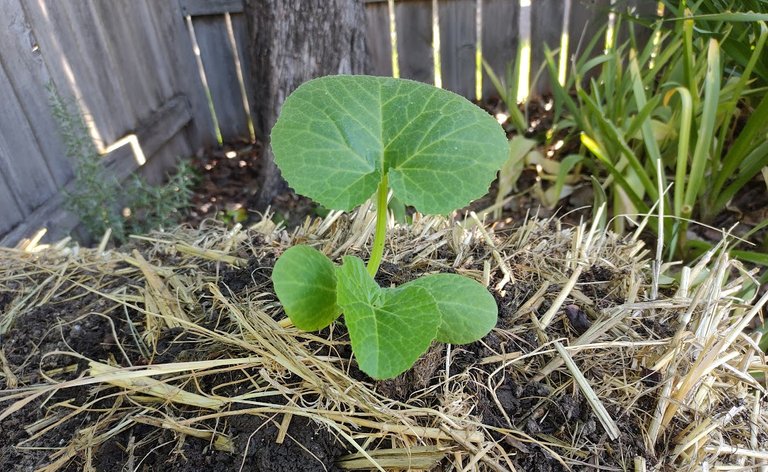
It's about time I share the results of last summer's great pumpkin experiment in the garden.
Allow me to share photos here in this article of the various stages of pumpkin vine growth in my backyard garden over the course of the 2021 growing season.
May 16
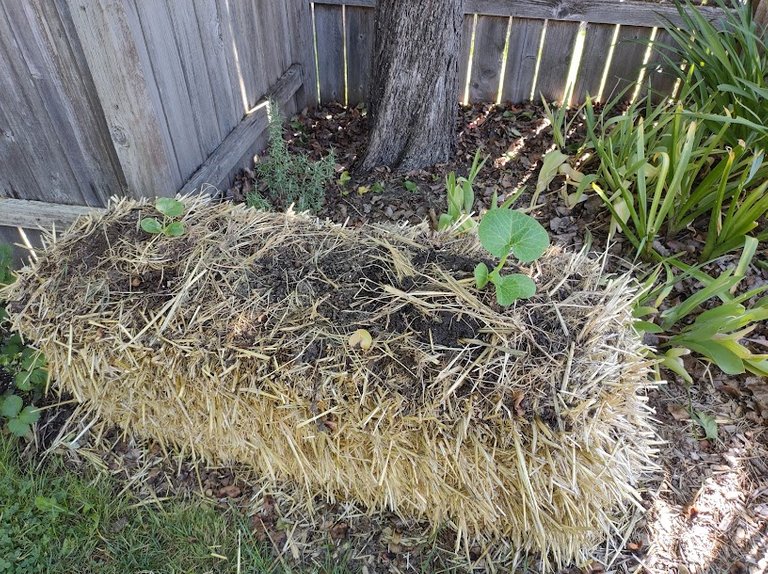
Originally grown indoors, these pumpkin vines I grew from seed had been transplanted into a straw bale as soon as temperatures became warm enough.
June 4
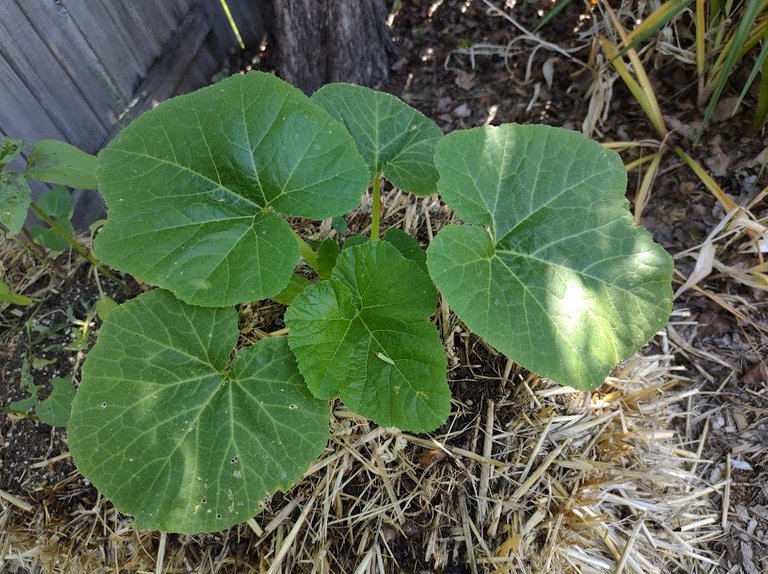
There were many variables on the table. I was trying out a new pumpkin variety, called Cherokee Tan. Reputed to be fast growing, easy to adapt to most climates (practically invasive), and forms delicious fruit suitable for eating.
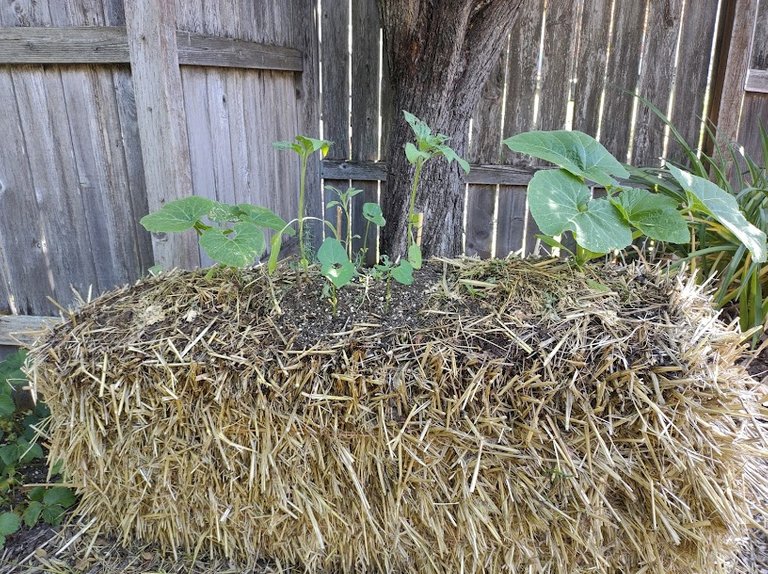
Also the straw bale, I had no idea if it had been treated with pesticides or not. Considering I purchased the bale from a animal feed store in a suburban neighborhood where everyone values organic and green products, I crossed my fingers that it wouldn't be loaded with inorganic, dangerous chemicals.
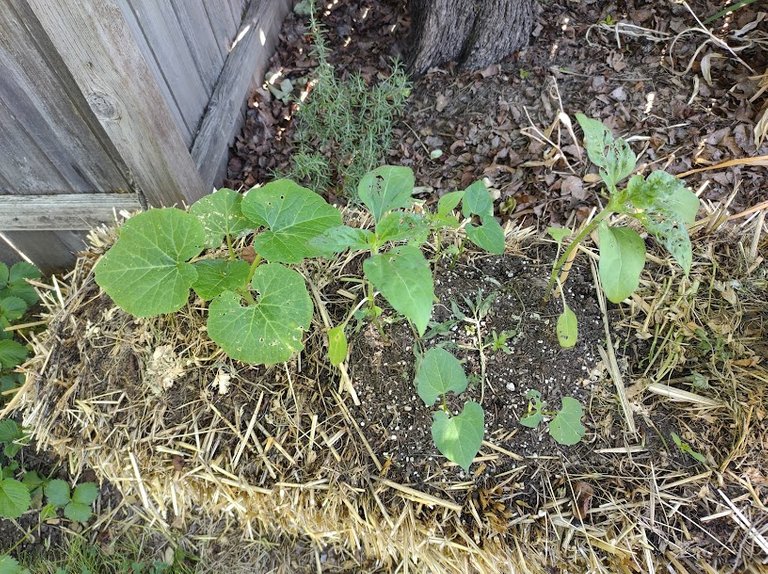
Using methods I could control, I had prepped the straw bales by saturating the top layer with high nutrient mushroom compost. I let it soak in for a few weeks, and watered with compost tea, to really let it soak in and start to decompose and moisten the inside of the bale.
June 18
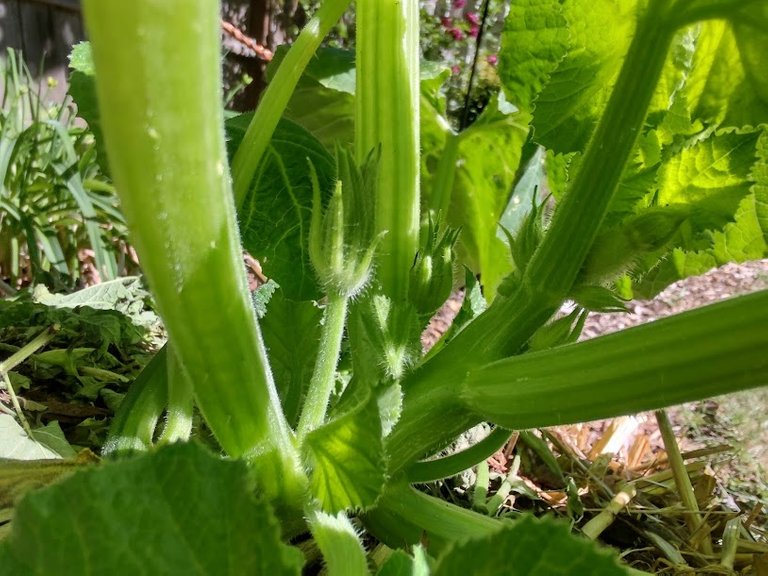
Companion plants were added into the mix. Sunflowers to provide shade during the hottest noon hours, along with the tree overhanging above. Nasturtiums to bait the aphids and pests away. Trumpet vines to attract pollinators were taking well to the bale.
June 27
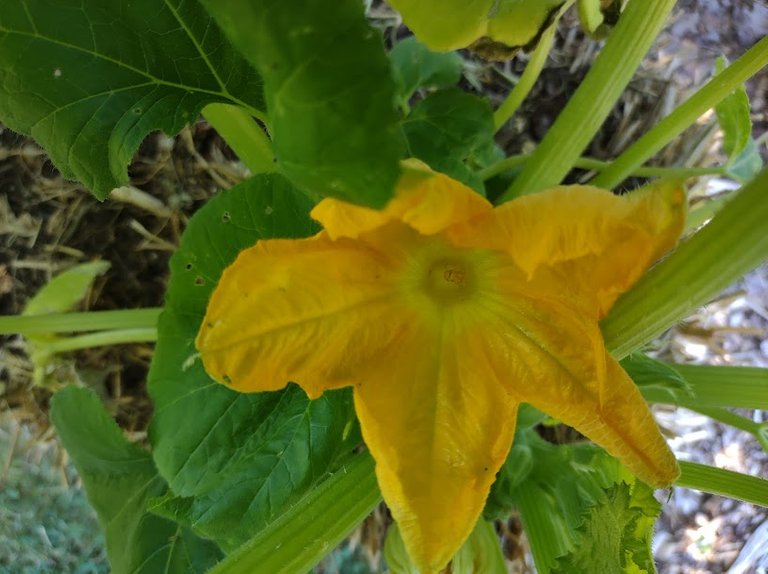
Beans and peas were added, but they didn't really adapt well to the bales. The pumpkin vines were accelerating in growth by mid June when temperatures started heating up.
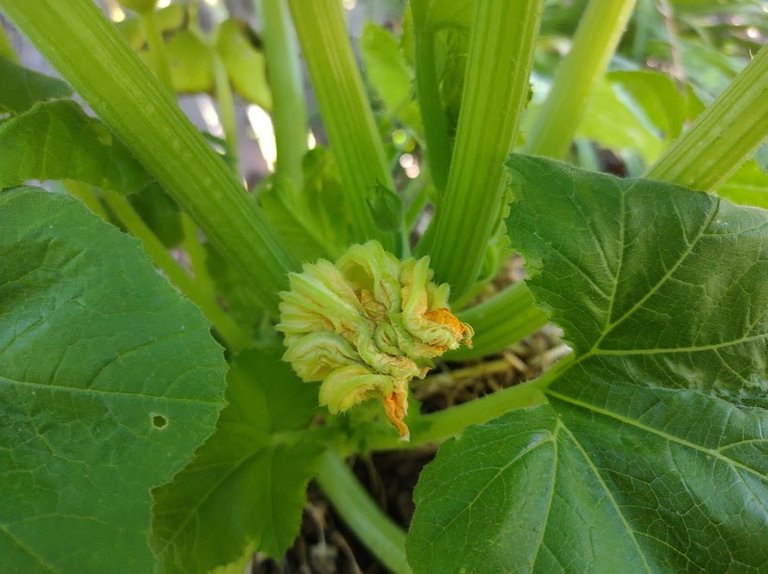
When the flowers started showing up daily in mid June, I kept my eyes out for any signs of female flowers.
Flowers typically only last a day. They open in the morning, and then twist shut at night.
July 2
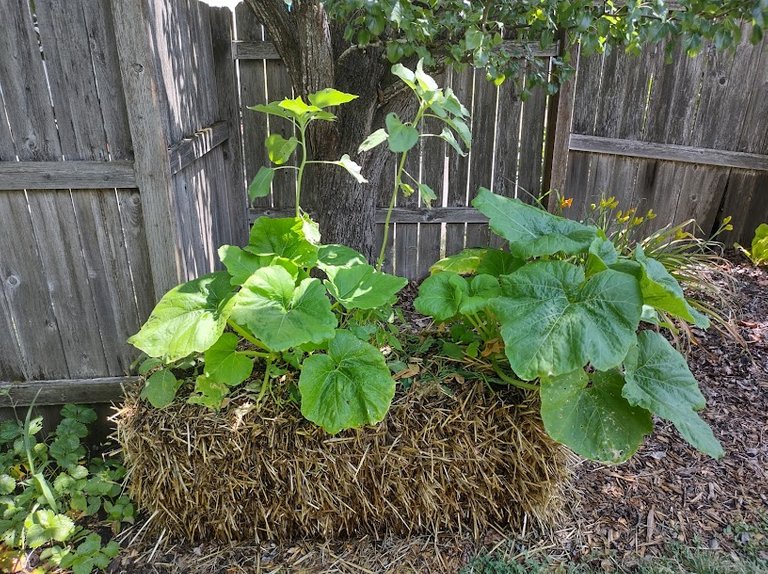
New leaves were continuing to form, and older leaves were turning deeper green and larger. The vines were extending, with my direction, along the length of the bale.
July 13
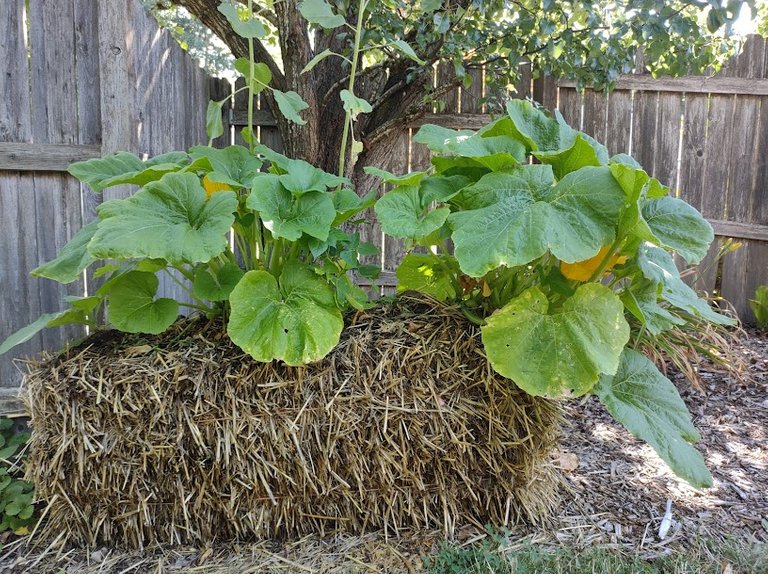
Every week or so, if lucky, I might find a female flower. If so, I would pray a male flower might also be in bloom. If so, I would snap off the male flower to rub the stamen directly onto the female pistol to ensure it was generously coated in pollen.
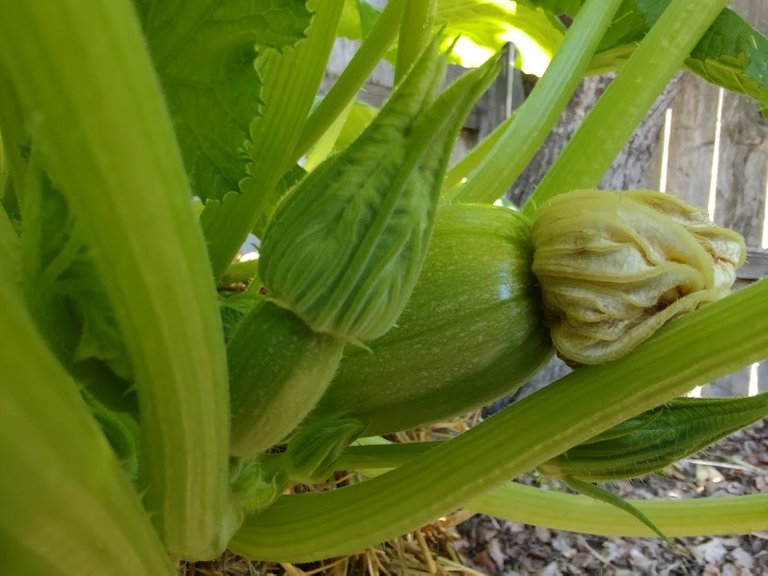
Here, we finally have the first signs that the fruit has been, shall we say, impregnated successfully.
Nearby another female flower is starting form. Normally I will pluck these new ones off if they are growing too close to another pumpkin fruit, as they will compete too much for space and energy.
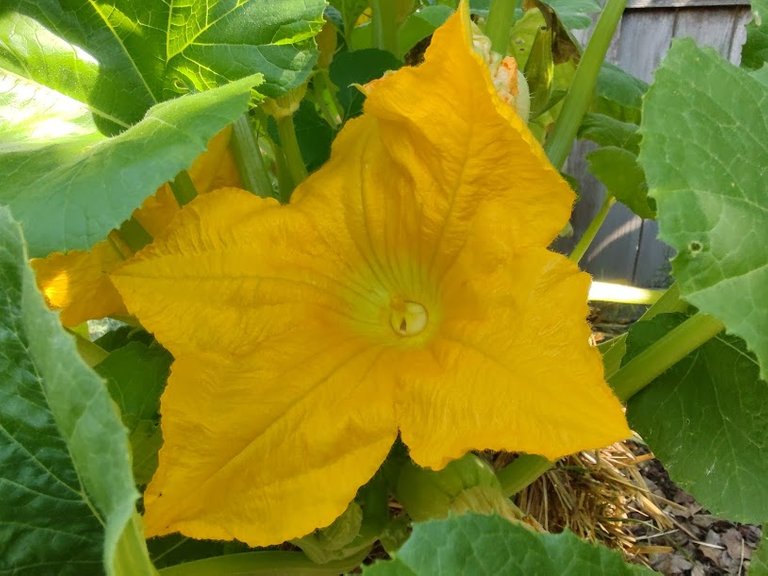
Meanwhile, more flowers were starting to form, bigger and brighter.
July 19
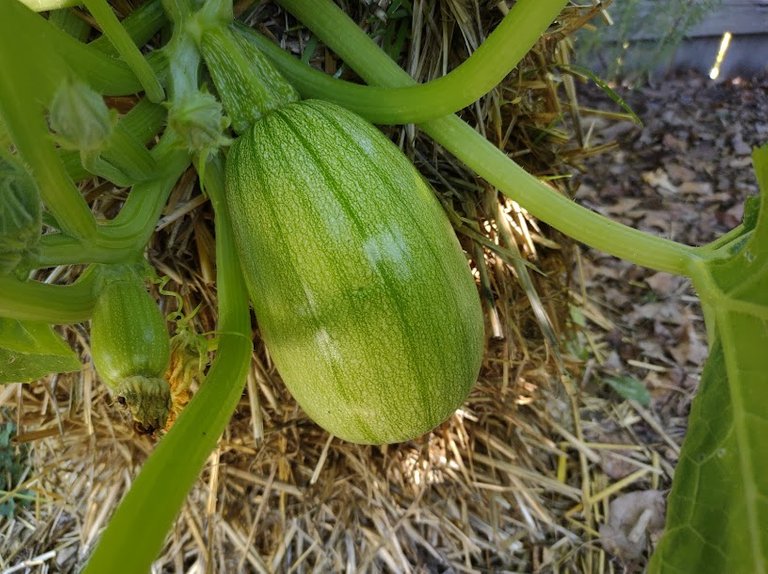
Rapid fruit growth begins to occur.
August 5
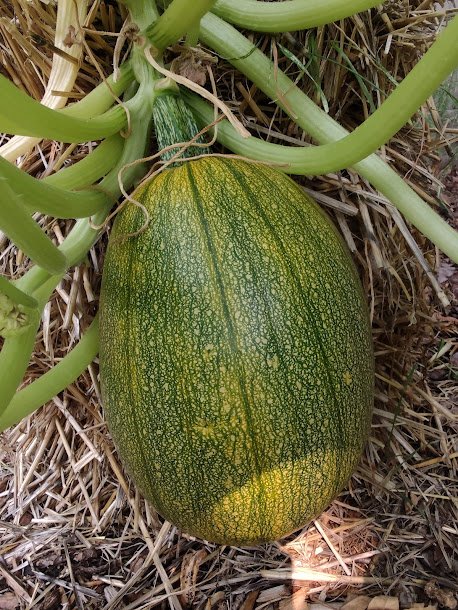
Color change starts to set in.
And another pumpkin fruit has formed, on the other pumpkin vine.
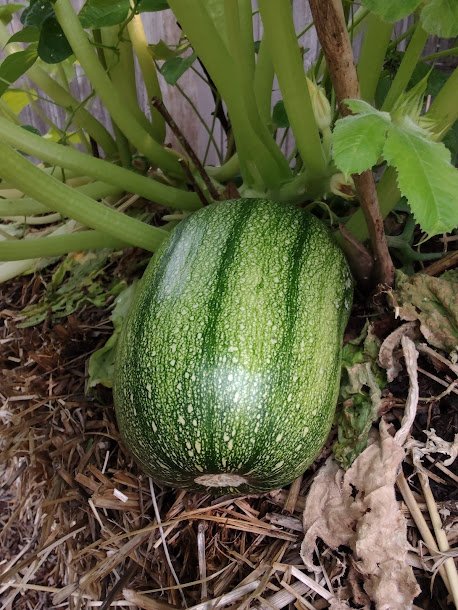
I should probably mention that I hadn't been watering as frequently as I had done in past years. The straw bale seems to hold water well for most of the week. If the day is super hot, I might shower the bale with water, otherwise I usually wait at least a full week to water again.
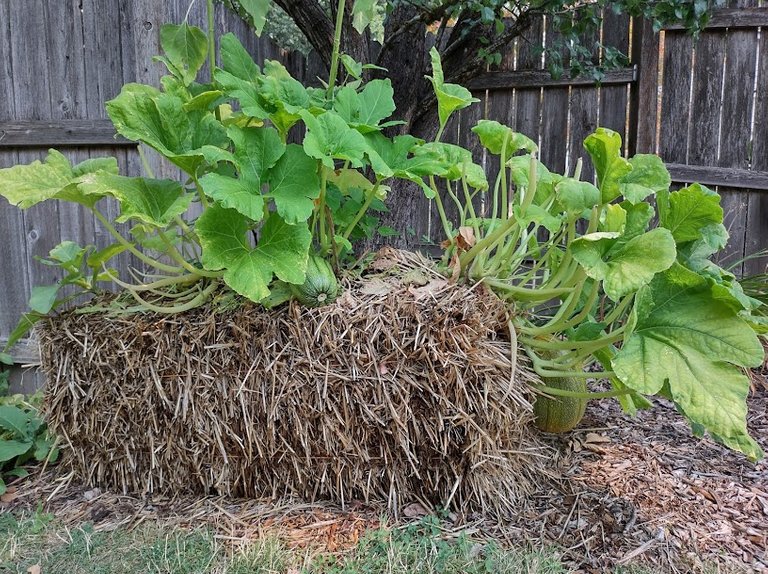
The way I usually determine the average period for when I should next water is based on how I perceive the health of the leaves. If they seem weak and droopy, as if wilting, that is my que. They do this when the water has evaporated from the pores of the thin leaves. Almost immediately after I water the roots, the leaves become more turgid, and stretch out to their full size again.
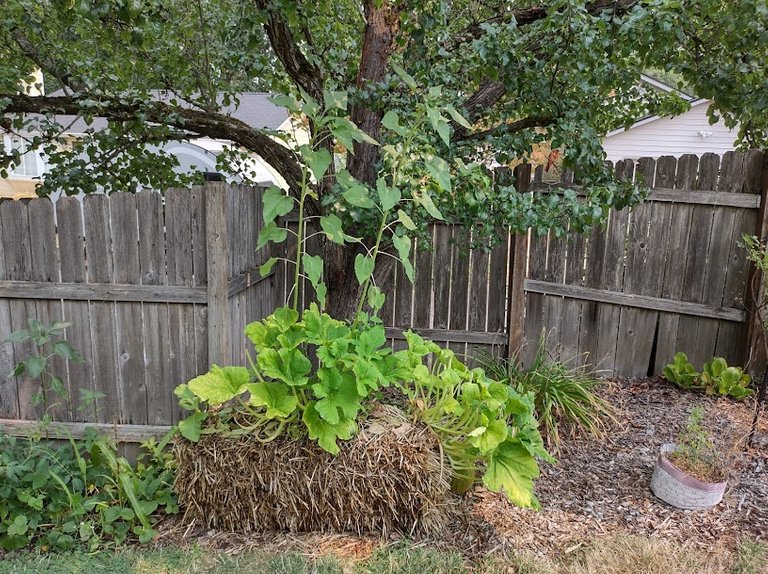
Generally I try not to water the leaves, as this can sometimes cause mildew to form. The straw, I have noticed does a good job of promoting deep root growth. It also wicks water away from the surface, which keeps the underside of leaves dry, which prevents mildew.
August 12
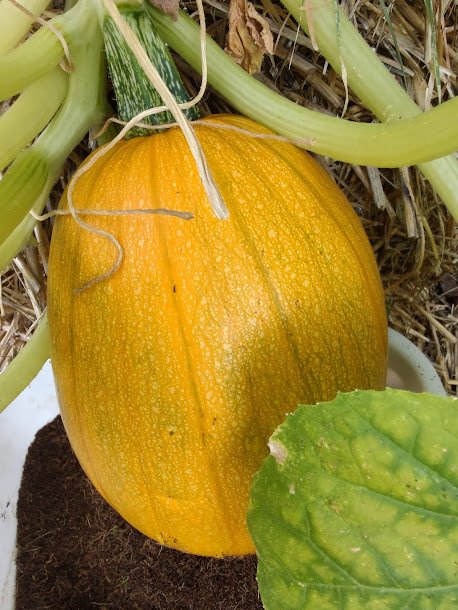
By this time in late summer, the pumpkin is starting to reach its full size. Since it is hanging off the side of the bale, I decided to add some support underneath to prevent the weight of the hanging fruit from ripping the roots of the vine out.
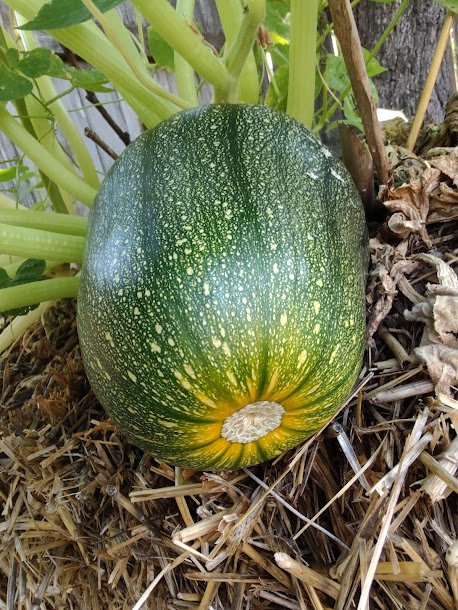
The other pumpkin was not forming as large. It is still at a younger stage. I think the timing of the fruit formation is best if it occurs slightly before mid summer.
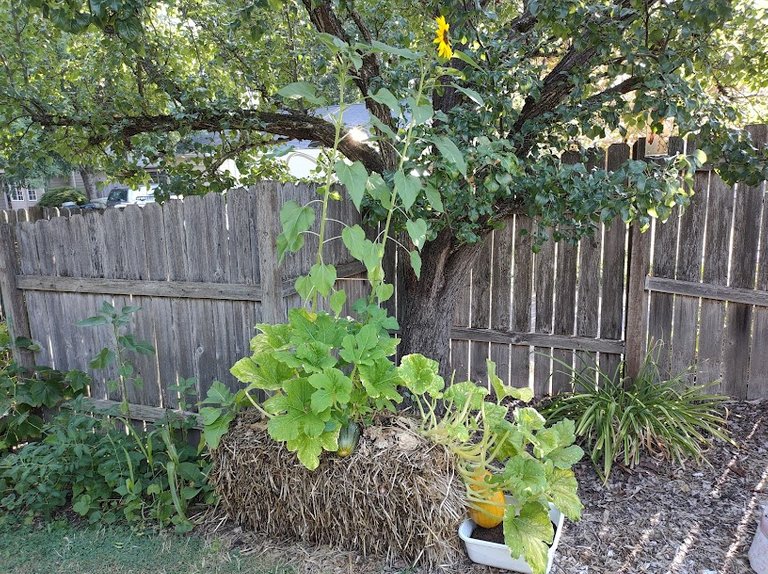
I haven't seen any new pumpkin flowers in a few weeks, and the older leaves seem to be getting larger, but less green. New leaves are not really forming as much anymore. This tells me the plant has reached a level of maturity that is focused mainly on ripening any fruit it holds.
August 25
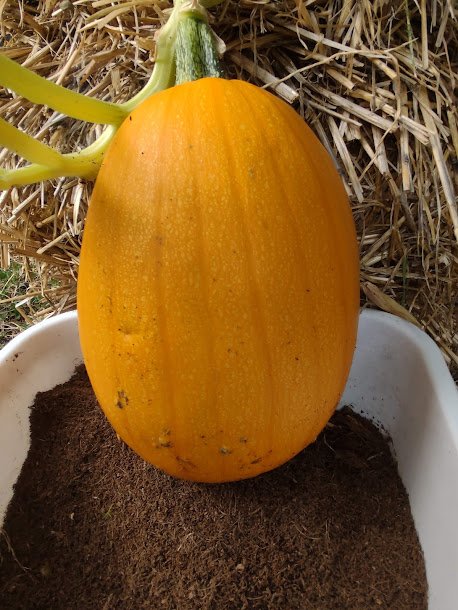
Fully orange on this day. Still, I choose to let it remain on the vine as long as possible. The plant will not be forming any other fruit at this stage in its lifespan, so it might was well continue to nourish the fruit and seeds to make a healthy fruit.
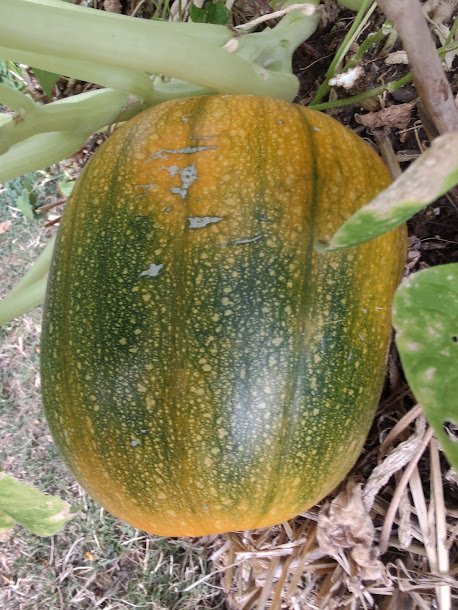
The other pumpkin is halfway orange at its current stage.
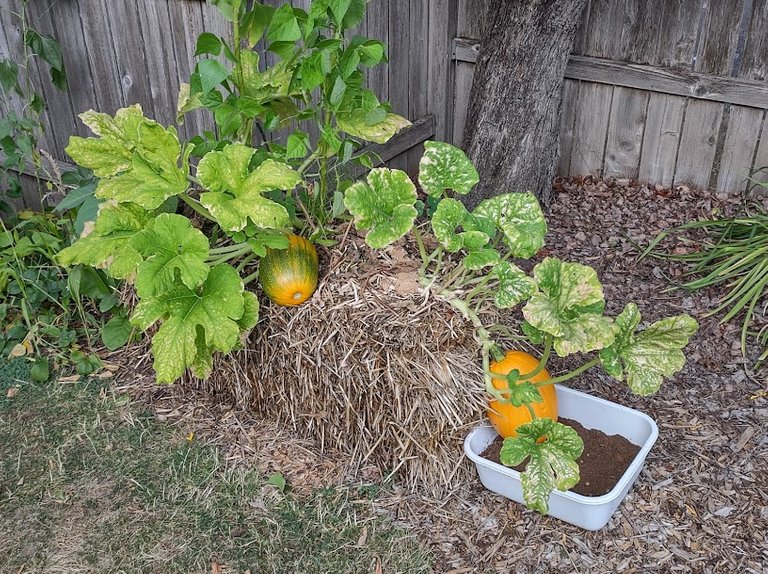
Another thing I wanted to mention is the sunflowers growing in the center, I used some wire to tie them to the tree above, so they would not tip over. Additionally, I used a piece of bamboo wood to separate the stems near the tops, to help keep them from swinging into the other in the wind. The trumpet vine has been directed to climb up the sunflowers, and they seem to be adapting well to this little garden experiment of mine.
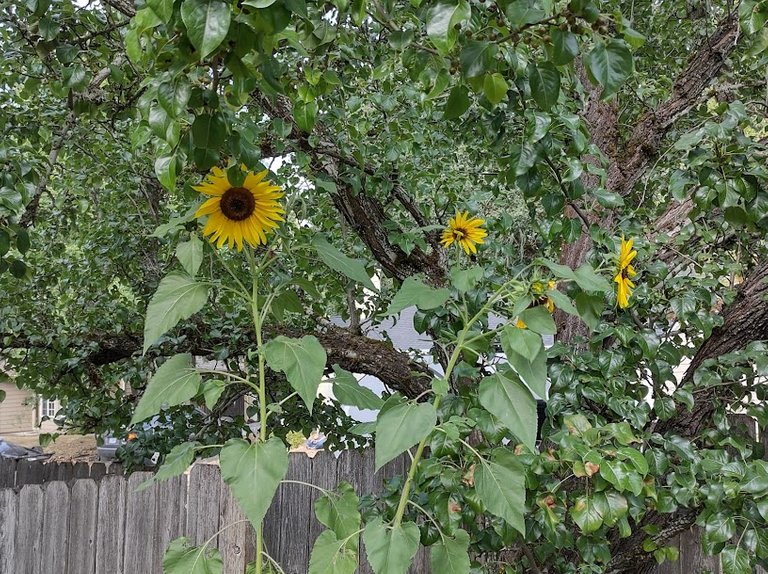
Sunflowers are in full color.
September 12
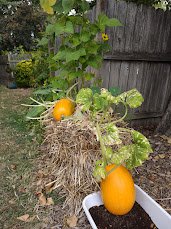
The pumpkins have been orange for a few weeks now. The vines appear to be weakening, almost dying off. However, I am amazed that there is still no signs of mildew. In all past years I have had problems with mildew in early September on the pumpkin vines.
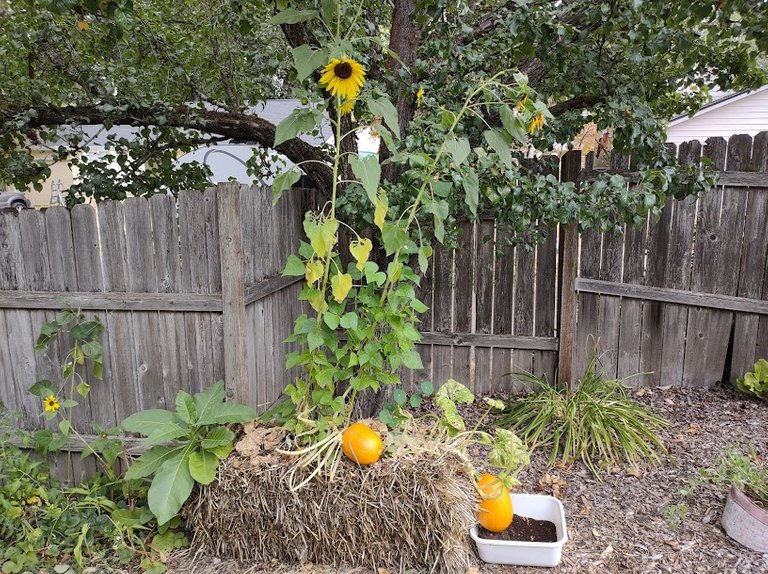
Nearby a Nicotania I had planted in early spring has suddenly taken off like a rocket on the left side of the bale. It has huge tobacco leaves, but no flower spikes yet. Perhaps it is stealing the thunder of the pumpkin vines?
October 30
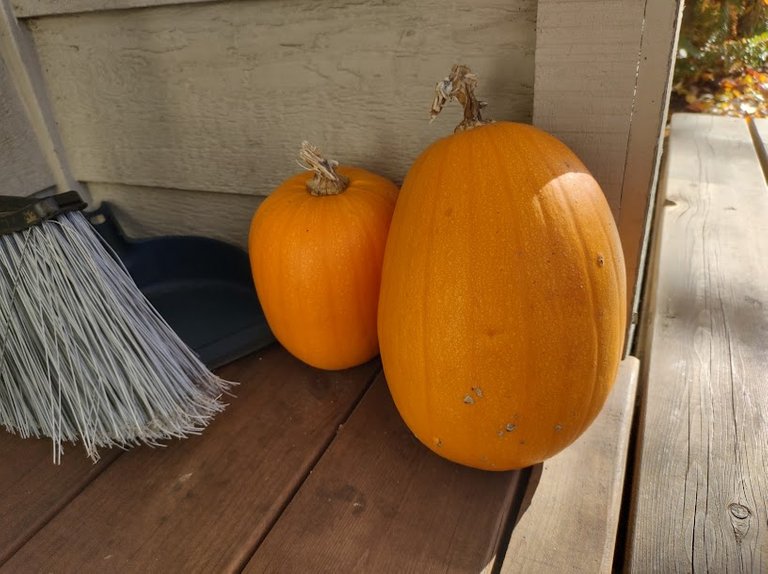
In time for Halloween, I allowed the finished pumpkins to ripen on the doorstep for the upcoming holiday.
Despite this being another year when covid is still the scariest nightmare to worry about, many children chose to challenge the risk, and ring our doorbell for free candy and smiles.
November 5
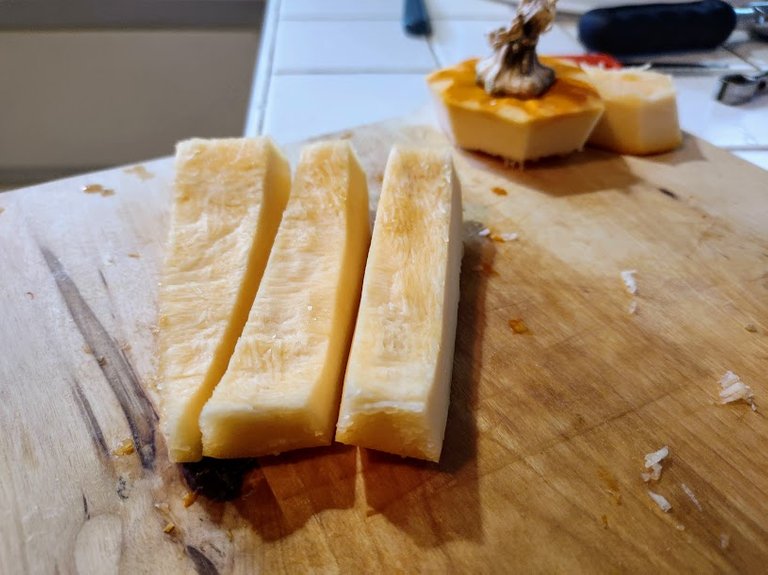
The best way I found for carving the fruit from the pumpkin was to peel the rind off with an apple peeler, and then slice downward with the grain, into wide strips. These strips can then be cut into smaller bite-sized chunks.
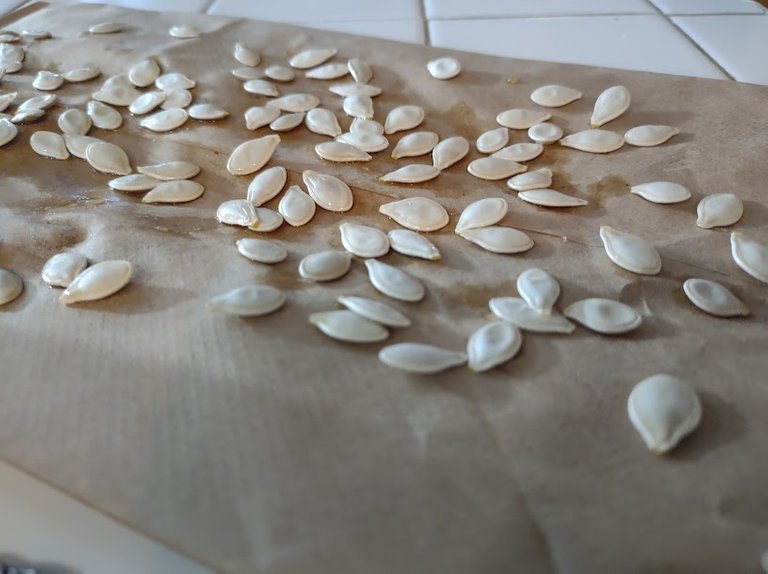
Seeds were rinse of in a bowl of water, and then arranged on a paper sack to help wick away the moisture.
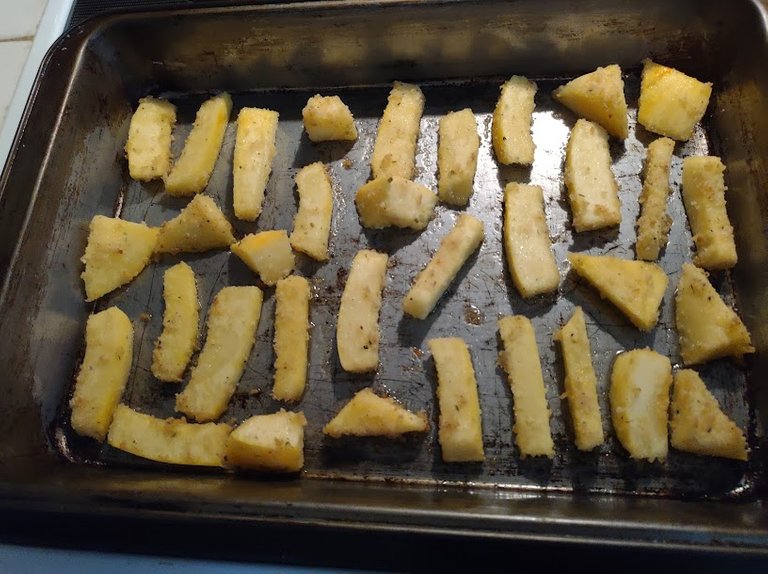
Coated in olive oil, and seasoned with salt, pepper, herbs, and Italian breadcrumbs.
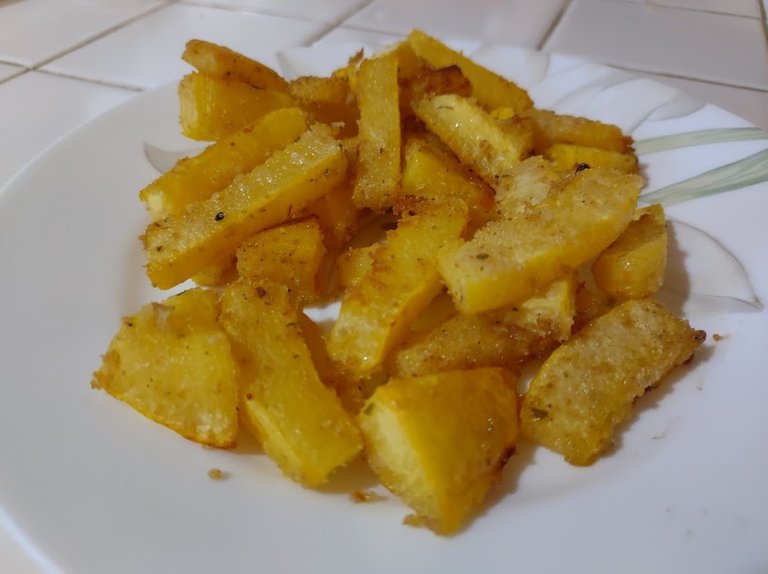
After roasting in the oven, they can be cooked as crispy as a french fry, while still soft and savory like a yam on the inside. Delicious.
Conclusion
Overall, I would call this experiment a success. This is the first year I successfully grew a pumpkin, start to finish from seed to fruit. I had been trying for three years prior, and I was super happy I finally succeeded for once (twice, considering two fruits were grown!).
Best seeds of truth I learned:
- Straw bales work much better for me than raised beds, containers, or in-grown in amended native dirt. With the bale in decent shape after one season, I can probably use it again next year to plant pumpkins again.
- The Cherokee Tan pumpkin is an excellent variety, and adapts quickly to my climate. In the past I always grew Sugar Pumpkin, and it always failed to thrive or produce fruit. It could be the difference of planting a rare heirloom seed vs. a cheap seed engineered by a seed company. Choosing the right variety can make a big difference in the health of the plant and fruit yield.
- Timing is key. Aim to grow the young seedling so that its vine and leaf starts to get no larger than your hand. By then it needs to be transplanted outside in soil temperatures 40 degrees F (ideally 50 degrees F) and above. Assist in pollination to germinate fruit by early July.
- Keep the harvested seeds well aerated before wrapping in paper. Moisture on the inside will continue to evaporate out, even after the exterior feels bone dry. Seeds will mold easily, as I found out, a few weeks later if put into a plastic ziplock sack.
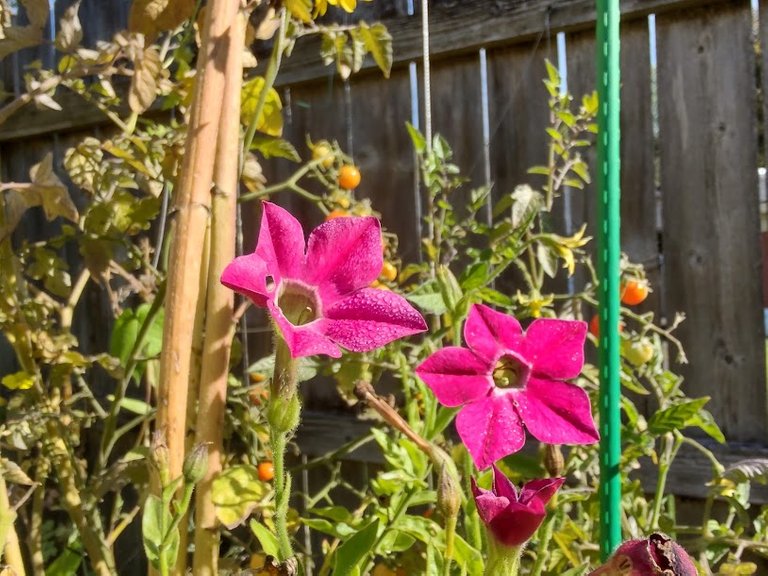
Post Beneficiaries:
- 1% @cryptopie
This is my way of thanking each of you for your friendship and support. By sharing my talents on Hive, I can also share to help with your needs.
Let my success also grant you some happiness too.

The amount of work in keeping the journal entries. Nice job and congrats on a successful pumpkin! 😁
Hard work is the key. You have beautiful pumpkins. Your efforts paid off.
Nice summary of your straw bale experiment. You got a couple nice pumpkins.
Wow! That was so nice!!! What is the name of this pumpkin? What variety?
Cherokee Tan. Buy from Etsy.
Wow! That was so nice!!! What is the name of this pumpkin? What variety?
Pumpkins are fun to grow! I like the way you set up your post, too! That's usually how I structure mine because it just makes sense. Reminds me of when I grew turban pumpkins. They did well in my (amended) native soil. I avoided mildew last year for an extraordinarily long time as well.
I've always wanted to try the straw bale method. I wonder why the legumes failed in it.
Growing them in straw, it's brilliant! They're looking awesome, I am sure it tasted great with Italian breadcrumbs!
How interesting. And we plant pumpkins on a compos heap. With such a landing, they practically do not require any care.
I love your pumpkins they look delicious. I love your pumpkin bed too! If I may ask, what variety is your pumpkin? Greetings from the Philippines!
Cherokee Tan.
Thank you for the response (^_^)
It grew from pumpkin seedlings. Flowers bloom at the pumpkin plant. The flower turned into fruit. The fruit grew and ripened. Finally it was prepared for eating.
It's nice that you took pictures for so long and wrote the post so well. This is really awesome
Its great pumpkin! I see a great taste of that pumpkin :)